Connecting a washing machine to the sewer is a very simple matter and here you do not need to have any supernatural skills, it is enough to have “straight arms” and a head on your shoulders.
But there are still some nuances. One of the details that may raise a question is the siphon for the washing machine.
Now we will figure out whether a siphon is needed for a washing machine? If needed, what kind and, in general, how to properly connect a washing machine to the sewer?
What is a siphon for a washing machine
Before we start disassembling siphons for washing machines, let's first find out what function it has. The siphon is intended for the following:
- Forms a water seal - in the siphon there is a special chamber filled with water, which separates the drain pipe from the sewer pipe, thereby forming a water seal.
- Due to the water seal siphon prevents odors and noises from entering from the sewer to the premises. Also, various insects will not get into your apartment through the sewer pipe.
- Siphon prevents sewer clogging. Debris settles in the water chamber, which could clog your sewer pipe. From time to time, the siphon must be cleaned from it.
That, in principle, is all that any siphon is needed for. Its main task is to create a water seal, which already performs all the above functions, except for collecting dirt.
We all probably know what a siphon under the sink is. So, a siphon with a drain for a washing machine is what it is, but with one slight difference, it has an additional branch for connecting the drain hose of the washing machine. Look at the pictures to see what it is.
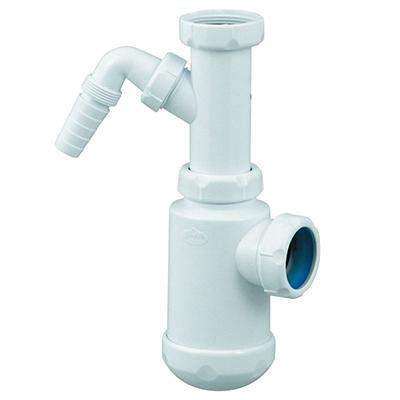
Such a siphon is convenient because you there will be no need to take care of an additional outlet in the sewer pipe for the washing machine. You simply buy such a siphon and install it under the sink in place of the old one. And already connect the machine to it. We will discuss connection in more detail below.
I would like to say separately that there are also hidden siphons for washing machines that perform the same function, but they can be built into the wall, thereby hiding from view.
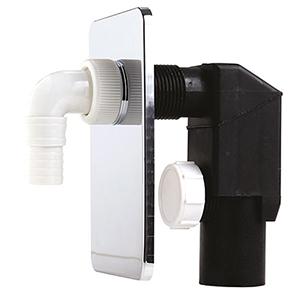
Such a siphon for a washing machine is an ideal option, but it can only be installed in advance, during the repair work of the bathroom, so if you decide to repair the bathroom, then install such a siphon. For other cases, it, unfortunately, will not work.
Do I need a siphon for a washing machine
At first glance, a siphon is a rather necessary and necessary thing in the household. But let's see if it is needed and what threatens its absence. If you connect the washing machine to the sewer without a siphon, then, accordingly, we do not get the advantages that were given above, namely:
- The smell from the sewer will get into the washing machine, which will not please us at all. There will be a musty smell coming out of the washing machine.
- All debris will go down the drain, which can lead to clogging. Although this is a controversial point, it can still be.
As you can see, the washing machine has the disadvantages of not having a siphon.Of course, you can avoid them by connecting the curved drain hose of the washing machine so as to create a water seal and hang it above the maximum possible water level in the sewer, as shown in the photo. At the same time, it may be necessary lengthen the drain hose in order to have enough.
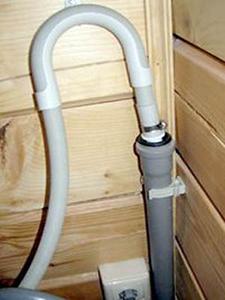
But this method will only eliminate the unpleasant odor, and it cannot be called 100% correct. Therefore, we strongly recommend the use of a siphon.If it is not possible to install a built-in siphon, then use a siphon with a tap for the washing machine.
Connecting a washing machine to a siphon with a drain
To connect a new siphon with a do-it-yourself outlet for a washing machine, you need to remove the old siphon and install a new one in its place. Also you can only change the tube with a fitting. But it is better to replace the entire siphon entirely. To do this, we unscrew with our hands two plastic nuts that attach the siphon to the sink and to the sewer.
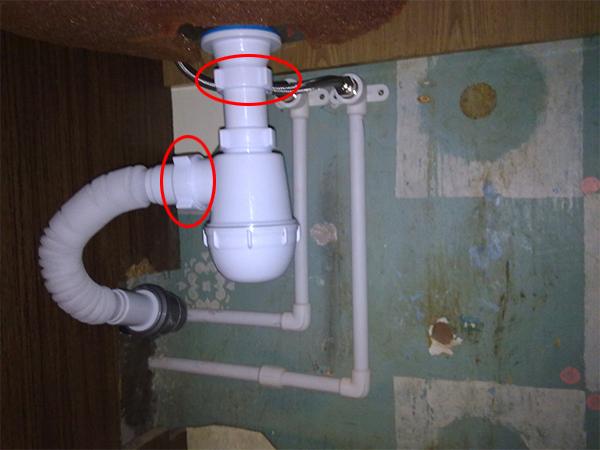
By unscrewing these nuts, you can easily remove the siphon. At the same time, clean the outlets from adhering dirt and hair.
Now you need to take a new siphon for the washing machine and screw it in place of the old one. Next, put the drain hose from the washing machine on the fitting on the siphon and tighten it with a clamp.
You should get something like the following. This completes the connection of the siphon.
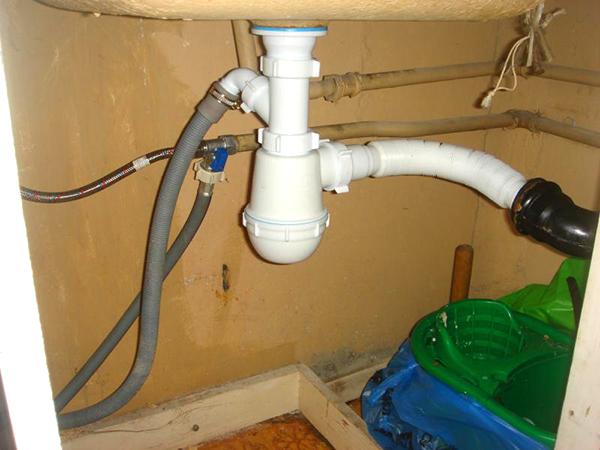
I would like to mention that there are a huge number of different siphons on the market for different types of sinks. There are even siphons for a bathtub for a washing machine.All of them are connected in a similar way and have the same properties.
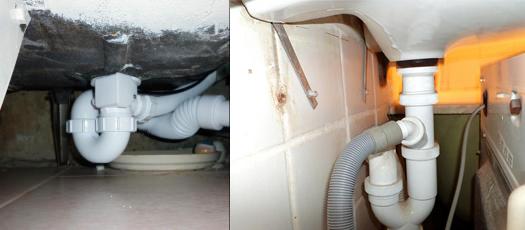
Connecting a built-in siphon for a washing machine
The main task with such a connection is to embed the siphon into the wall - the connection itself is very simple and boils down to the fact that on the one hand you need to connect the siphon to the sewer pipe, simply by putting it on it. Further, the whole thing is closed with tiles or plasterboard and a small branch remains outside.
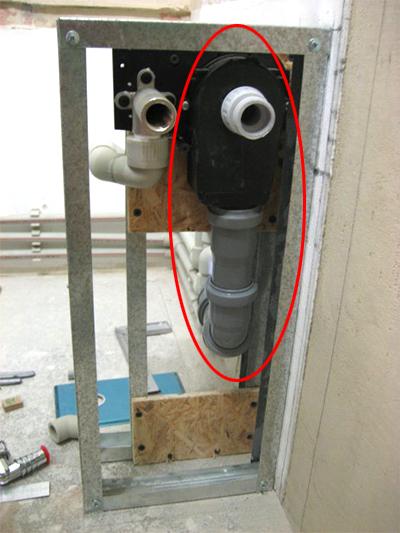
The drain hose of the washing machine is put on this outlet, simply by putting on it, or inserted by tightening the nut. This design is most relevant if you install a sink above the washing machine and you need to minimize the space between them.
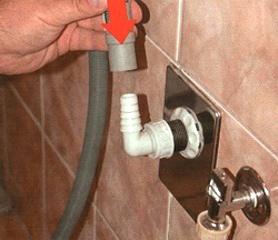
Connecting a machine without a siphon
To connect a washing machine without a siphon, you will need a special cuff that is inserted into the sewer pipe.
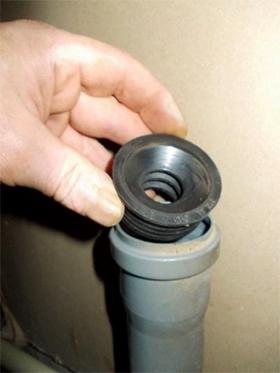
As you can see, the cuff has a hole inside with a diameter that matches the drain hose of the washing machine.
Next you just insert the drain hose into the hole and this is where the connection ends.
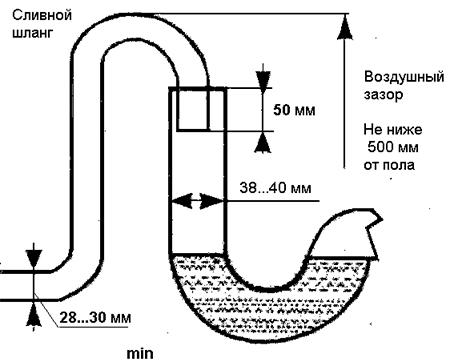
As you can see, this connection method not only has the disadvantages that we cited above, but also does not look very aesthetically pleasing. After all, the pipe must be diverted to a sufficient height. Therefore, we are extremely we recommend using a special siphon to connect washing machines to the sewer.
